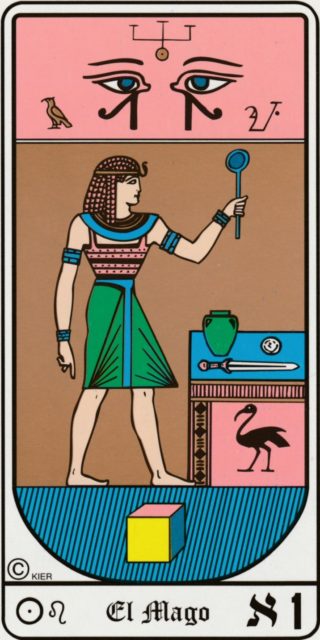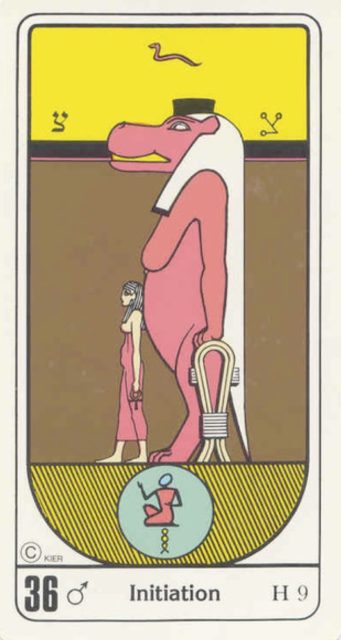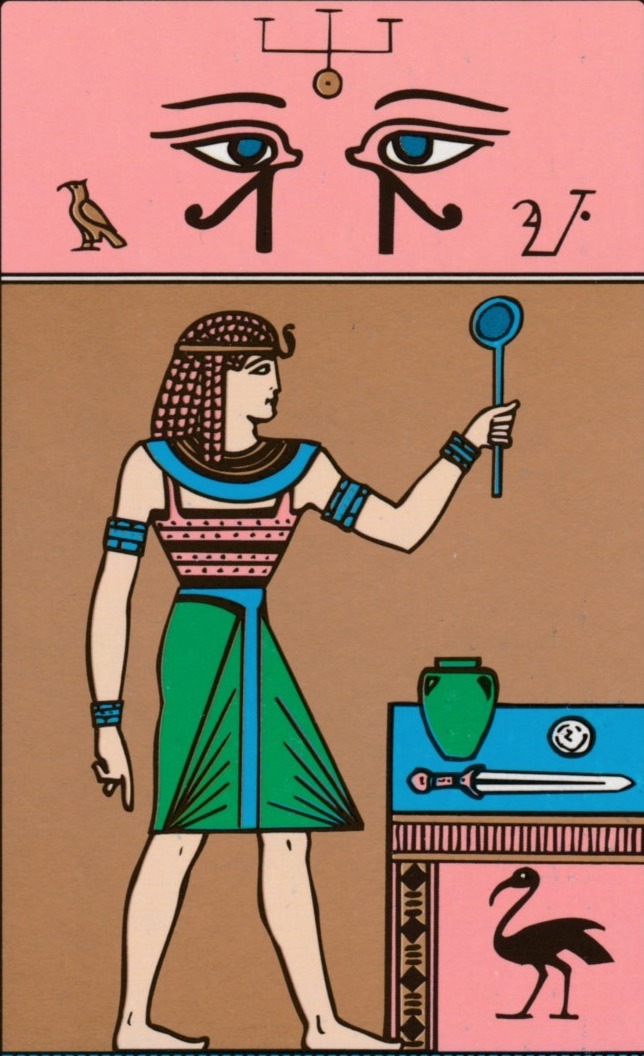The gnostic philosophy is axiomatic, meaning that it is complete in and of itself and does not derive from any other source. The gnostic philosophy is practical and verifiable through the consciousness, and this is only possible through an axiomatic teaching.
“An axiom is pure understanding. In traditional logic an axiom is a proposition that is not proven or demonstrated, because it is considered to be self-evident, and it defines or delimits the realms of analysis. In other words an axiom is a logical statement that is assumed to be true and therefore this truth is taken for granted and it serves as a starting point for deducing or inferring all other truths… All theories or postulates come from axioms; the axioms are a starting point. You cannot reduce the axiom to something less. You cannot say the axiom comes from somewhere. Hence, the difficulty in finding the source of axioms because they are not deduced from another logic; they are the starting point of a logic, or truth or knowledge.”
-Paul Movsessian
A source of interest for axioms is in the Egipcios Kier tarot deck that was endorsed by master Samael Aun Weor and written about extensively in his book Tarot and Kabbalah. Each card in this deck has a Transcendental Axiom, a short statement that is like a koan and cannot be interpreted with the mind, but must be meditated upon.

The following is a transcription from a talk by Paul Movsessian, a gnostic instructor in Australia. The transcription has been edited for brevity and clarity.
Gnosis has to start in the head and end in the heart, and we are going to talk about something a little bit from the head but I wanted to end in the heart. To understand Transcendental Axioms we have to have Intuition and it is the language of the Being, it is symbolism and all the laws we have to recognize are different to the intellect and to the subjective reasoning.
Tarot
Every card has a list of different things related to it and one of them is the Transcendental Axiom, which is a short phrase. I tried to find the origin of these Transcendental Axioms and what I discovered is there is no single source for them. They come from many sources. We are not sure exactly how they came to be put onto the card or where its source is. They mainly come from religious, kabbalistic and alchemical teachings. Before we talk about them it would be interesting to explain what these words Transcendental and Axiom mean, as it helps us to understand the statements.
Transcendental
The word Transcendental comes from the idea of being superior or surpassing, relating to knowledge that pre-supposes our thought or our logic – knowledge of a supernatural nature or a knowledge that comes from a higher plane. This could be a characteristic within a philosophy or knowledge with Intuition as its basis. So transcendental has that explanation within it.
What is more interesting is the word Axiom. First of all there are various ways to approach it. Simplistically it means pure understanding. An axiom is a pure understanding. In a traditional logic an axiom is a proposition that is not proven or demonstrated, because it is considered to be self evident, and it defines or delimits the realms of analysis. In other words an axiom is a logical statement that is assumed to be true and therefore this truth is taken for granted and it serves as a starting point for deducing or inferring all other truths.
One of the key features of axioms is in mathematics. It is applied in many systems, but most common in mathematics. In mathematics they have logical and non-logical axioms. All theories or postulates come from axioms; in other words, the axioms are a starting point. You cannot reduce the axiom to something less. You cannot say the axiom comes from somewhere. Hence, my difficulty in finding the source of axioms because they are not deduced from another logic; they are the starting point of a logic, or truth or knowledge.
So, basically theories and ideas flow from Axioms. It is really the foundation of deductive logic. In the 1980’s a French Philosopher (François Laruelle) created something called Non-Philosophy. His Non-Philosophy model uses axioms to state that everyone is confused because they are creating a logic based on their own logic, and you have to go back to the axiomatic knowledge. He says that the Gnostics and the mystics are where you find the true philosophy rather than the philosophy taught now, the de-constructive philosophy and so forth.
Etymology of the Word “Axiom”
The etymology of the word axiom is from Greek and it has a meaning, “to deem worthy”, to require being in balance, having the same value as worthy, proper; these are the main meanings applied in different ways. The Greek philosophers claimed the axioms were true and did not need to be proven and formed the basis for the logic the Greeks began. What is unusual is that from that point on, the logic born from the Greek times, Master Samael explains, is that Intuition took a step back. We have developed a reductionist thinking now, thanks to that Greek logic. It had its place and value but now we have to come back to the age of Intuition, which brings us back to the axiomatic knowledge.
The root meaning of this word was basically, to demand. Mathematics took this on, and Euclidian mathematics turned it into mathematics in movement, which termed this Geometry. The Greeks call this one of the Seven Great Sciences. Geometry is really important because the axioms are a way to understand the world we live. The world we live in comes forth in geometric shape from a mathematical starting point. The entire world, as we see it, is geometry in motion, in time and space. We try to describe the world that we see through an axiom. This is how the early Greeks started to look at it.
Deductive Reasoning
They used it to go into their logical deductive reasoning; they started to conclude new knowledge and old knowledge and started to create rules. This is where the problem began. They started to create rules for their logic and those rules started to lead them in a particular way; to a way that created a deductive knowledge that was self- feeding. In other words you have your postulate and use your knowledge to validate your postulate. But the postulate comes from the axiom. Then by your reasoning, you naturally come to your own conclusion, because your logic is self-feeding. This was the problem in classical terminology.
In modern thinking and development we could see Newton started to use axioms, basic laws of the three-dimensional world. Then Einstein came along and created his General Law of Relativity and that is also an axiom. Physicists use these axioms as a starting point to talk about realities, to talk about the world and the laws that govern us. Another aspect of axioms are used in philosophy for understanding because philosophy is trying to understand our place in the world and trying to acquire that wisdom of the reality of the world. Thus, philosophers formed a system called pure understanding, within which axiom came the way to conclude what could possibly be real and not real.
Axiomatic Knowledge
Ultimately, what is seen in axioms is that the axiom itself needing no proof, had to come from somewhere. A proof that natural understanding that being recognised as Intuition. Within axiomatic knowledge it is understood that it is intuited, that this fact is real so I do not have to prove it because it is real. From the axiom everything unfolds.
Transcendental Axiom
We are going to talk about the Transcendental Axiom of each card. So each card has a Transcendental Axiom at its basis, which has a fundament truth, an intuitive truth that belongs to the card. If we understand that intuitive truth we will be able to acquire the wisdom contained within the card. Remember that with each card is a volume of wisdom.
Basically, what happens is we have an Intuition, which allows us to recognize an axiom, and that axiom is seen in the perception of reality. The perception of reality produces an experience and then the experience gives us our thoughts in general. This is the methodology used in pure understanding or the philosophical model of axioms. So they come up with something, an axiom; they observe if it is true; they experience that truth and from that create a series of thoughts, theories and postulates. The problem is at number four because we could conclude a variety of things that do not relate back to the axioms and this is where we get into problems.
(1) Intuition
(2) Perception
(3) Experience
(4) Postulates (Thoughts in General)
From the Gnostic perspective we can resolve this by recognising that Axioms themselves are designed to inform us about the language of symbolism, which is the language of the Being, which helps us understand our dream world, to understand all the sacred texts, all the iconography like tarot, kabbalah. It helps us understand the mystical art, to understand the initiatic processes, the sacred texts written in coded manner. The axioms themselves, and what they are the foundation of, allow us to learn a new language that we need, to be on the same page, when we are talking about Gnosis.
If we look at these axioms we start to realise the depth contained in them. There are seventy-eight cards, with seventy-eight axioms. Each card has a title, which has its appropriate axiom and characteristics that belong to it. Before we do that I want to mention something about the laws that govern us.
Law of Analogies
How do they inform us? We know there are certain laws needed to understand the Tarot, Kabbalah and Alchemy. We know those things themselves are filled with language, which is mysterious, if we do not know what we are looking at. Some of these laws we have heard before, like the Law of Analogies. We may not know how to apply the Law of Analogies because if we do not carefully look at what these words mean we may find it difficult to recognise when a thing is an analogy or not. An analogy is a comparison of things that are unlike in there nature but have similar attributes, so they do not resemble each other but something where we find similarities. An example is a bicycle pump and a heart; they both have pump action but look nothing alike. Why is this important? Because in our astral experiences we are going to be getting analogies and if we do not know that it is an analogy or what the heck it is we could interpret it literally or think it is unimportant. If we also want to interpret the card we need to know what is going on, what is the analogy they are referring to.
Law of Correspondences
The Law of Correspondences is a law that looks at some kind of connection or agreement between two things. For example a feather is light, so anything we use in that sense is light. You can pick up someone and say, you are as light as a feather. We could look at the moon, which has a hidden side and our psychology that has a hidden side, compare that hidden side.
The Law of Opposites is a law about diametrically opposed things. They can inform us about the other end of the spectrum, black and white lodge would be a classical example.
The Law of Analogies is different to the Law of Likeness, because the Law of Likeness is where something may have nothing to do inside, but has external resemblance. So there is a Law of Likeness and Law of Opposites which is interesting to see what functions in the universe if things are drawn to each other because like attracts like or sometimes opposites attract. Have you thought about that, how come sometimes opposites attract and other times like attracts like? There is a phenomenon that happens there that allows those laws to function.
Law of Numbers, Weights, Measures
We know there is a Law of Numbers, Weights and Measures. An example is what life we are on; weight would be the karmic scale; measure would be if their serpent is raised, and how far but there are other ways we can interpret numbers, weights and measures.
Law of Philosophical Analogies
Master Samael describes in Tarot & Kabbalah these Laws as the Philosophical Analogies or Philosophical Correspondences. When you add that word philosophical it belongs to the lovers of wisdom and that philosophical also translates to the metaphysical, which relates to something of a higher nature like transcendental. So, a Philosophical Analogy is something like a Transcendental Axiom. These metaphysical, philosophical analogies describe what we study, so we say Gnosis is aperennial philosophy.
A perennial philosophy means that we have a philosophy that is not affected by time and space by time and place. So, Gnosis is Gnosis, it does not matter where it is if it is on Venus, Earth, Russia, China, India or Australia, it is a perennial knowledge. This is very important because it means we have a constant language we can access. So a Chinese master can communicate to us without speaking there language, can show us something that can impact us because we understand that perennial philosophy.
Examples of Transcendental Axioms
Card Number 41, Ascension:
The bows of the mighty ones were broken and the bows of the weak were fitted with strength.
It is very close to a Zen Koan in some ways. In the Zen tradition they have Fifty-Two Gate1s, if a person follows the Rinzai School they have to go through koan after koan. If they get one right they go to the next one until they reach fifty-two and become a master of the school. They would have had to surpass the Fifty-Two Gates. It would take a long time to sit with a koan like, “What is the sound of one hand clapping?” There is a story of one of the Zen monks who rushed to his teacher to tell him the sound of one hand clapping, making a whooshing sound, but it was not correct, “No, my son go back”. It took him six years before he understood that koan.
Card Number 40, Premonition:
Thou must never be as a man with open eyes to covertness, or as a woman with open ears to flattery.
Card Number 32, Magnificence:
Rejoice with love of thy youth and rejoice even more with love of thy maturity.
Each of these we could read but they will not translate, as we have to read them in context. Now we are going to go through Number 36, Initiation. What is important with these Axioms is these greater numbers have to be reduced, so this one would also relate to Card 9, The Hermit. When you look under Card 9 the first thing you see is Initiation.
Each of these cards through their number, image and axiom will interpenetrate to communicate amongst each other. There is a series of them that all talk about the weaving loom. This particular card its axiom is, It is pleasant to play music, pleasant to sing and pleasant to listen. Another translation is, Sweet is the ringing, sweet is the singing, sweet is the hearing. There is a lot of sweetness or pleasantness.
Example Card #36: Initiation

Name
First of all what does initiation mean? It comes from, to initiate, to begin. So, initiation means the beginning of something, so we have to recognise that forms part of it, so the Transcendental Axiom, and what we are doing in dissecting one card hopefully giving some clues as how to go about understanding the other axioms.
Image
Let us look at the card itself, what is the card? There is a hippopotamus there and it is an Egyptian Goddess, Her name is Ta-urt and this Egyptian Goddess has the body of a hippopotamus, the hind legs of a lion, the tail of a crocodile and the breasts of a woman. So, already contained within that symbol, like the Sphinx, is a series of mysteries that one has to unravel. Why these creatures, what do they represent, why do they come together as one? Obviously this is not a real creature, you will not find a hippopotamus like this in Africa.
Obviously there is wisdom there and as we start to discover, Ta-urt, was very well known as a Goddess of childbirth and pregnancy. Pregnancy, birth and initiation are intertwined, so we have to follow the thread of this story. Although, because of the Law of Analogies and Correspondences we can associate things like birth and initiation. In her hands she is holding a scroll and it is a papyrus scroll that has an amulet that is a protective amulet. There is protection through this initiatic birth. There is a person kneeling in prayer under her, kneeling on top of a rope that is intertwined in the symbol of infinity. The person kneeling and praying on this infinity, so we could extract a lot of wisdom about the process of initiation and infinity and how that would connect.
Ta-urt had a special function to protect the mothers in childbirth and pregnancy and in front of her is an expectant mother carrying the Ankh and she is obviously being watched over by Ta-urt who is protecting her through this process. Sometimes this hippopotamus was used for another symbol, just like the crocodile, sometimes used as the Being and sometimes as the Ego and the hippopotamus was also like that. I do not know if you know that in Africa more people die from hippopotamuses than lions because in the water they are fantastic, they are in their element in water. When they are frightened or when they are angry they can create tremendous destruction, so this image can also have a destructive aspect, hence the Law of Opposites. Within here contains a symbol for protection, birth and initiation; and another facet of destruction, then we can find out why the destruction, why this would happen. The Divinatory Meaning of this card has above here a serpent, which is a hieroglyph, which is interesting for us for initiation, the hidden meaning of this symbol.
Planetary Force
The Planetary Force that governs this is Mars, so the forces of Mars and a relationship with Hermetic Astrology would come into play to understand this.
Divinatory Meaning
Pregnancy, childbirth. It also represents the feminine power and the magnificence of the feminine power. Because of the initiation and birth and development it obviously means in projects; you could extract more mundane levels or higher levels. Projects we undertake could come to fruition; there will be progress, satisfactory development. Because also in childbirth, its very interesting, the process of childbirth, if anyone has been at a birth, or any mother will tell you, there is a tremendous pain that happens but after that pain there is a tremendous joy and exuberance that occurs. To get to that exuberance there has to be a tremendous pain that has to be got to first.
That process is again encoded in here where the Divinatory Meaning is pain that eventually leads to growth and also in that case we see the initiation leads to inspiration as well. The Law of Opposites to this, if the card where reversed, would be the exact opposite. Fertility, birth, initiation, growth and development; the opposite would be sterility, miscarriage, destruction from unknown forces, stagnation, things ending before there time or fruition, financial frustration through extravagance, spending for example. In other words anything that uses energy in the opposite way we were describing.
So, Initiation in and of itself is an act of vivification, which means to revitalise with vigour, to bring new life. This card and its Transcendental Axiom are talking to us about new beginnings, new opportunities, but one has to be in the right state of Consciousness to do that. A person cannot approach initiations with the wrong state of Consciousness with the wrong values, with the wrong attitude, wrong emotional and mental states. We cannot come to the initiatic process without the appropriate requirements needed. One cannot come to the initiatic process and ask what they are not eligible for. So one has to wait, to be patient for the appropriate time. So, in the axiom, as I said, It is pleasant to play music, it is pleasant to sing, it is pleasant to listen (I will explain more in a moment). Sweet are all these stages, every stage is relevant and important. In the process of initiation there is a beginning, middle and end; then a new beginning. It is a never-ending process, hence the infinity down here.
Element of Prediction
Another aspect to this symbolizes human virtue. The human virtue of progress and actualisation of powers. As an element of prediction it promises birth, new beginning. It can imply, if people want to think materialistically, fortune, success in business, or it can also mean (which is a wonderful part about this), dissipation and destruction because in birth, in this process, is already leading to growth, old age and death, we are already on our way.
We are born, progress to a climax and then it is down hill. Every birth has within it the seed of destruction, because where there is a birth there has to be a death. We know that if we have done the rose bush exercise, we see in that experience the rose has to die in order for the plant to be born. Something has to die for the plant to be born, so, my Transcendental Axiom if I get it for this day means something in me has to die in order for this new thing to grow.
Something I have to let go of, something I have to finish with, some way of living, some habit, some attitude, something. Something has to go, it was sweet in its time but now it has to go for something new to be born, to initiate the new, initiate the next and to bring the vigour into my life. If I do not let this destruction and death occur then there will be no birth, therefore I do not start from that vigour of youth again, I do not begin from the new.
In other words I have to approach each day completely blank to live the moment without preconceptions, to see my day from a state of consciousness that is willing to be in the moment, to be willing to perceive moment to moment, from instant to instant, truth which is changing. If a person has a truth they want to hold on to, they make it a dogma. It becomes a postulate that loses Intuition that loses understanding of the original premise. My internal experience gave me that impetus, now I become stuck in it as a dogma of a doctrine. So, I have to recognise that what is true is true now, and later circumstances change, the world changes life changes.
So, the Modulating Attribute, which is an aspect that relates to Mars, which means this card has an attribute that is going to go up and down and it represents the principle of unfolding ones own virtue. The principle of this axiom and this card represents the principle of unfolding ones own virtue; obviously we are talking about the Being not ourself.

